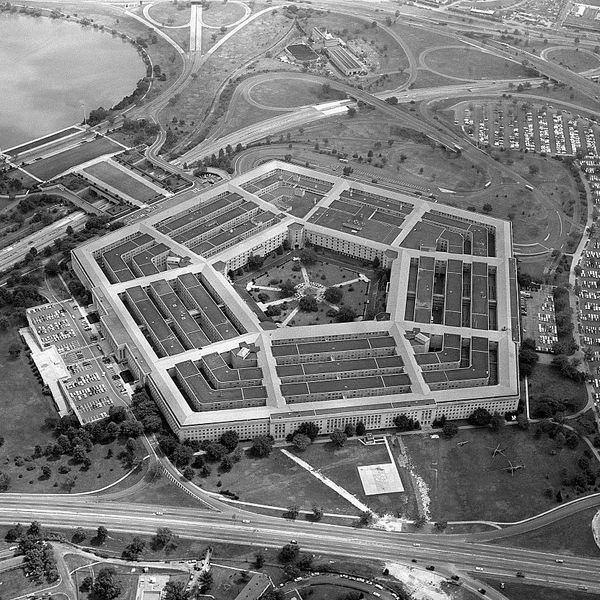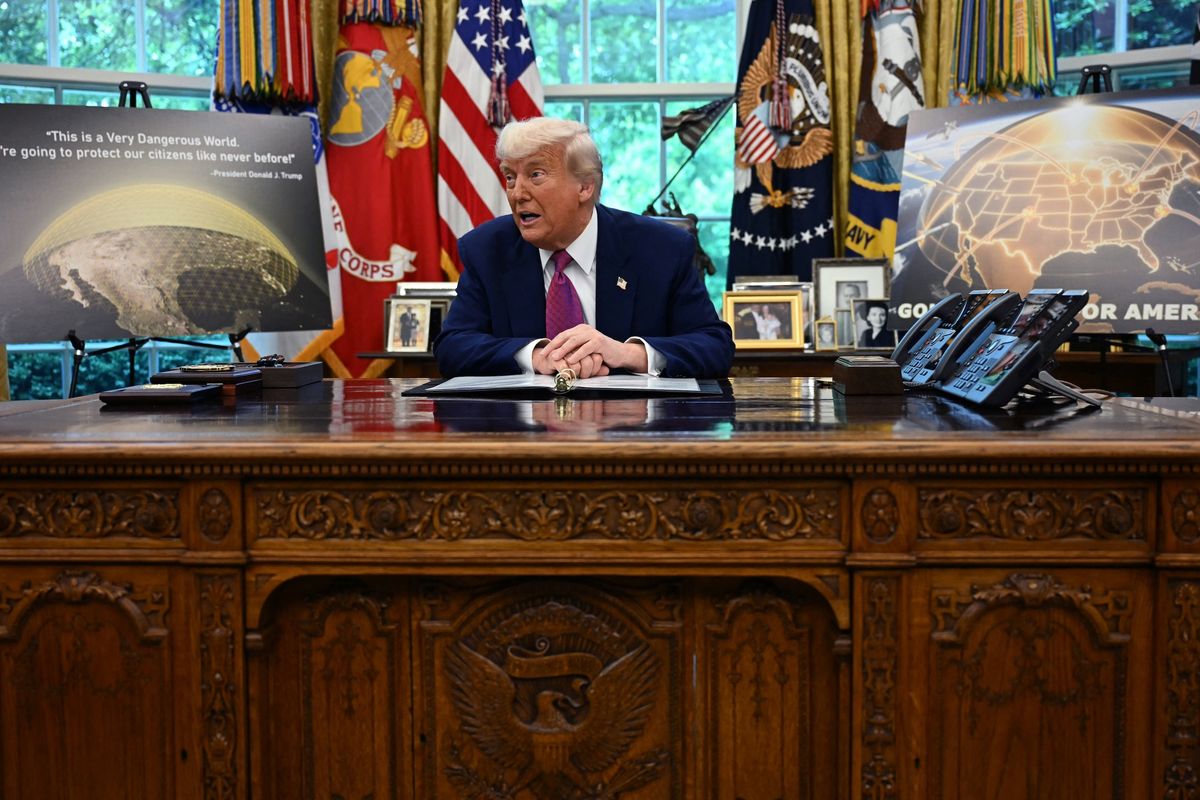OPINION — “The DoD [Department of Defense] seeks to accelerate space-relevant technology development across the commercial space enterprise through numerous innovative programs, to include AFWERX/SpaceWERX.”
That was a written answer by Air Force Lt. Gen. Stephen N. Whiting, nominee to be Commander of Space Operations Command, to one of a series of Senate Armed Services Committee questions made public prior to his confirmation hearing on July 26.
I was unaware of SpaceWERX and AFWERX, but both use grants and contracts that team up military developers with private industry, small business technology experts and academia to create transformative outcomes to problems that meet the needs of Space Command and the Air Force.
I since have learned that SpaceWERX is seeking to develop maneuverable spacecraft that could connect with on-orbit satellites for services in space such as refueling, maintenance, debris removal or even, if necessary, take offensive actions.
The 35-pages of answers that Whiting provided to the Armed Services Committee provided me the opportunity to better understand Space Command’s priorities.
Let’s start with the foundation: The Biden Administration announced on July 31, that it will keep Space Command’s headquarters at Peterson Air Force Base, near Colorado Springs, Colorado. That reversed a decision made by former President Trump on January 13, 2021, (just one week before leaving office) that Space Command’s homebase would be moved to Redstone Arsenal, Huntsville, Alabama.
Cipher Brief Subscriber+Members enjoy unlimited access to Cipher Brief content, including analysis with experts, private virtual briefings with experts, the M-F Open Source Report and the weekly Dead Drop - an insider look at the latest gossip in the national security space. It pays to be a Subscriber+Member. Upgrade your access today.
Space Command was established in September 1985, to provide joint command and control for all military forces in outer space and to coordinate with other combatant commands. It employs joint forces provided from the uniformed services, i.e., Space Force, Army, Marine Corps, Navy, and Air Force, to accomplish the command’s military space operations mission. Space Command’s current Commander is Army Gen. James H. Dickinson, but Gen. Whiting is President Biden’s nominee, scheduled to replace him.
The Commander of Space Command is responsible for: DoD Space Domain Awareness (missile defense and missile warning sensors, global integrated networks, and associated command and control networks); Global Satellite Communications Operations; and Trans-Regional Missile Defense (missile defense planning and operations support in coordination with other Combatant Commanders worldwide, the Military Services, Allies and partners).
Space Command’s missile defense responsibilities were transferred from the U.S. Strategic Command as a result of the 2022 Missile Defense Review. Gen. Dickinson said about that, “Bringing the three mission areas of missile warning, missile defense and space domain awareness under one command…can more effectively integrate and fuse the sensor data for rapid detection, characterization, tracking and dissemination to ensure theaters can defeat any threat.”
Another addition to Space Command will come in 2024, Whiting said in his answers to the Committee, when responsibility for the Army’s Joint Tactical Air Ground Stations will be transferred to Space Operation Command’s Delta 4, headquartered at Buckley Space Force Base, Aurora, Colorado. “By the time all this coalesces, Delta 4 is going to have orbital sensors, ground-based sensors doing the strategic mission, ground-based sensors doing tactical missions and of course, all the array of antennas around the world that ensure that data transfer goes from one place to another,” Delta 4 Commander Col. Miguel A. Cruz told an audience in March.
That transfer will mark the first time all DoD military satellite communication functions will be consolidated under one branch of service and add to the already more than 20 of the military’s space missions now based in and around Space Command’s headquarters in Colorado Springs, Colorado.
Back in January 2021, Trump’s then-outgoing Air Force Secretary Barbara Barrett announced that Huntsville would become headquarters for Space Command –- although it would take years to build the needed facilities.
The Cipher Brief Threat Conference is taking place October 7-10 in Sea Island, Georgia. Apply today to attend the nation’s premiere conference for professionals working in the field of national security and cybersecurity. Space is limited.
Critics quickly claimed it was a political decision by Trump, who in December 2020, had gotten the support of then-Senator-elect Tommy Tuberville (R-Ala.) for the White House plan to question the Electoral College certification of Biden as President-elect when Congress met on Jan. 6. During a radio interview on August 21, 2021, former President Trump claimed, “I, single handedly said let’s go to Alabama. They want it,” when Space Command was looking for a permanent home.
After taking office, President Biden said he would review the selection and in March 2021, Members of Congress asked the Government Accountability Office (GAO) to also review it.
In its June 2022 report, the GAO said it had found that as of January 10, 2021, one day before a White House meeting to discuss the basing decision, a draft decision by top Air Force officials “identified Peterson Air Force Base as the preferred location for the U.S. Space Command headquarters, with Redstone Arsenal as the lone reasonable alternative.”
GAO reported that it interviewed some of the people who attended the January 11, White House meeting and found, “There was no consensus among the officials we interviewed regarding who ultimately made the decision to name Redstone Arsenal as the preferred location for U.S. Space Command headquarters, including the role of the then President [Trump] in making the decision.”
In any event, on July 31, a Pentagon statement was released that said, “Following a thorough and deliberate evaluation process, and after consultation with [Defense] Secretary Austin and weighing the input of senior military leaders,” President Biden selected Colorado Springs’ Peterson Air Force Base, so now the case is apparently closed.
Getting back to Senate Armed Services Committee questions to Gen. Whiting, he noted that “over the past four years, Chinese on-orbit satellites more than doubled (from 335 in 2019 to 681 in 2023 to date)…[and] Russian on-orbit satellites increased ~40 % (from 143 total in 2019 to 197 in 2023).”
For context, according to the U.N. Office of Outer Space Affairs, there were 11,330 individual satellites on-orbit at the end of June 2023. Some 3,000 were U.S. owned with an estimated 85 percent being non-government, commercially-operated, half of which were for communication purposes.
Gen. Whiting warned that China and Russia are committed to fielding diverse counter-space capabilities and pointed out that the Chinese had already developed and tested a robotic arm technology on a space vehicle that would be able to destroy or manipulate orbiting satellites.
Officially called China’s Shijian-21 (SJ21), it was launched in late 2021, had docked with a defunct Chinese navigation satellite and then moved it from its geostationary orbit to the higher so called “graveyard orbit,” where it would not interfere with other satellites.
Looking for a way to get ahead of the week in cyber and tech? Sign up for the Cyber Initiatives Group Sunday newsletter to quickly get up to speed on the biggest cyber and tech headlines and be ready for the week ahead. Sign up today.
Space Command’s Gen. Dickinson described China’s SJ21during his recent July 19, appearance at a national security conference in Colorado, saying the satellite’s capabilities were “dual purpose,” by which he meant they could also be used to harm or destroy the U.S. or any country’s, space satellites.
To meet such a challenge, Whiting said, “If confirmed, I will push for an integrated approach to defend our space capabilities and provide space-based capabilities to the warfighter. On orbit, we are building capacity to secure our satellite systems which provide these essential services. We are increasing our ability to see satellites on orbit and identify nefarious actions of our peer competitors.”
However, as Space Command’s Deputy Commander, Lt. Gen. John E. Shaw said during a July 6 interview at the Mitchell Institute for Aerospace Studies that, “Our ability to swiftly respond to any kind of activity or threat or suspicious behavior in space domain is limited today…It would take us awhile to get there, given the limited fuel budget, and it may be determined that we just can’t get there because it doesn’t fit within the lifetime profile of how you’re going to fly that satellite,” he added.
That’s where SpaceWERX comes in.
Back in November 2021, SpaceWERX began its Orbital Prime program, which was to be its first contracting development effort — an exploration of possibilities to create in-space servicing, assembling and manufacturing of on-orbit satellites. One announced element was to demonstrate by 2023, the ability to remove active space objects.
The SpaceWERKs proposed Orbital Prime video presentation to prospective participants pictured a hypothetical space vehicle with labeling that described three activities. The first calls for “on-orbit object approach,” which would involve inspection, sensing and characterization of the target object. Then there is “on-orbit object acquisition,” which would include remote proximity operations and docking with the target. Finally, there is “on-orbit object service,” of the target which would involve repairing, refueling, repositioning, or even de-orbiting the target object.
To carry out some of the on-orbit service activities, the proposed new space vehicle has a robotic arm. Among Orbital Prime initial contracts was one that SpaceWERX had awarded last October, to ThinkOrbital of Lafayette, Colorado, whose company official described its proposed spherical ThinkPlatform design as relying “on mature space technologies, such as autonomous robotic arm assembly” but also to provide “a large volume [area], protected from orbital debris and thermal effects, to accommodate in-space servicing, assembly and manufacturing activities.
This past April, Orbit Fab of Lafayette, Colo., announced it has secured contracts with military organizations, including SpaceWERX, worth $21 million for three missions to demonstrate proximity operations and to refuel spacecraft. The company, among other things, plans to create a logistics network in orbit consisting of reusable “shuttles” that move fuel from storage depots to satellites. The first of those missions is scheduled to launch in early 2024.
Shaw said in his July 6 interview that he wants an initial in-space demonstration of extensive space maneuvering capability for a platform by 2026 and wants all future space observation satellites to be equipped for refueling or other life-extension capabilities by 2028.
“If I have sustained maneuver, I can move at will and that complicates the targeting capability for an adversary — it complicates a lot of things,” Shaw said.
I’ll be watching SpaceWERX for indications of where U.S. Space Command’s mission is leading.
The Cipher Brief is committed to publishing a range of perspectives on national security issues submitted by deeply experienced national security professionals.
Opinions expressed are those of the author and do not represent the views or opinions of The Cipher Brief.
Have a perspective to share based on your experience in the national security field? Send it to Editor@thecipherbrief.com for publication consideration.
Read more expert-driven national security insights, perspective and analysis in The Cipher Brief
Updated 8/4













